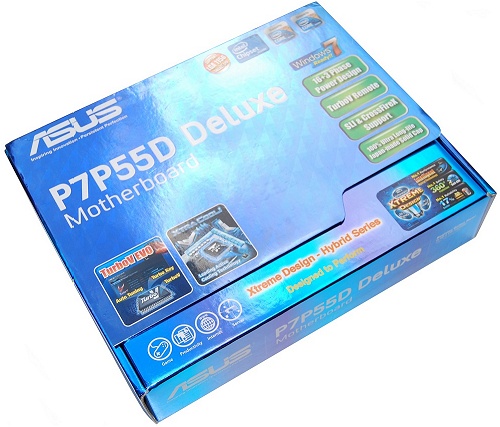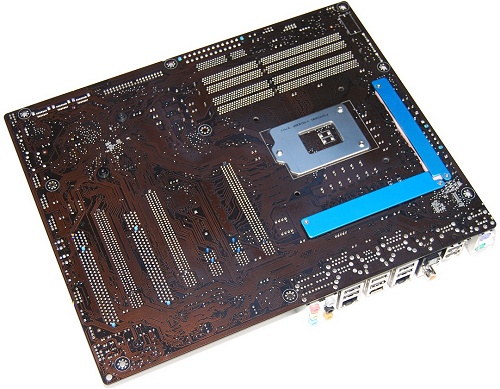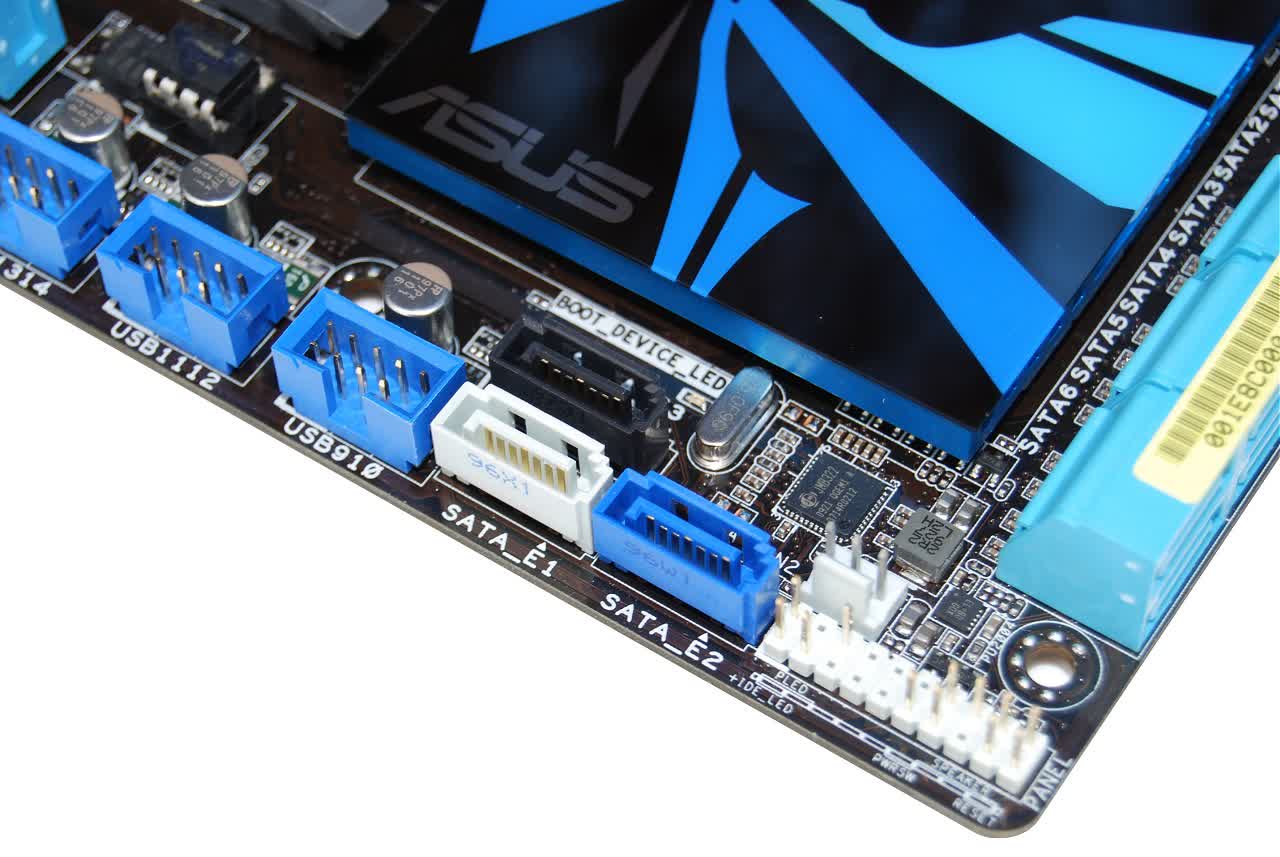Features & Specifications
The Asus P7P55D Deluxe features what Intel refers to as the Platform Controller Hub (PCH) – or what you may know as the P55 chipset. However, P55 comprises not the typical northbridge and southbridge chipset configuration, but rather a single chip that acts as the new I/O Controller Hub. This chip is connected through DMI directly to the Lynnfield processor, which in turn holds most of the Northbridge functionality.


There are just 16 PCI Express lanes integrated onto the CPU die, so Crossfire or SLI must use a dual x8 configuration. In theory, single graphics card performance on the LGA1156 platform will not suffer, whereas dual and triple card configurations might.

However because PCI Express 2.0 is being used, we get double the bandwidth, and therefore an x8 lane will deliver 4.0GB/s of bandwidth. This means dual card configurations using current generation graphics cards should work rather well on P55 motherboards, though triple and quad card configurations should see a noticeable performance loss.

If you are willing to spend that much money on graphics cards, then stepping up to more costly X58 offerings is an obvious logical choice, even when offerings like the P7P55D Deluxe are advertised to support Quad-GPU SLI and CrossFireX. Even triple card setups are not recommended on this P55 motherboard, as the third PCI Express 2.0 x16 slot is limited to x4 bandwidth, providing just 2GB/s.

For the typical gamer the Asus P7P55D Deluxe is a luxury item. Notable features include a 10-channel HD audio codec, RAID and Drive Xpert technology, FireWire, USB 2.0 as well as a whole host of Asus brand features.
While this board is certainly well equipped, it's not the amount of features that concerns us, but rather how some of them are offered. For example, the P7P55D Deluxe supports 9 SATA 3Gbps ports and has as much as three different controllers connected to them. The P55 chipset handles six of these SATA ports using the Intel Matrix Storage Technology to support RAID 0, 1, 10, 5 and JBOD.

Along for the ride are two additional controllers from JMicron. The JMicron JMB322 which supports Drive Xpert technology via a pair of SATA ports. Then we have the JMicron JMB363 PATA and SATA controller, providing a ninth SATA port and a single IDE port, which can support two PATA devices.
We don't see the need to include IDE support on a $220 high-end P55 motherboard, as it is very unlikely that anyone purchasing this product will actually use it. Had Asus gone with a pair of JMB322 controllers, the P7P55D Deluxe would have not only boasted an impressive 10 SATA ports, but it would have also had room to mount them all on a 90-degree angle at the edge of the board.

Another wild card is the VIA VT2020 10-channel high definition audio codec, which we know little about. While the specifications look up to par, we have little experience using this codec. Based on our subjective testing it does appear to be a rather high quality on-board sound solution, though having only tested it for a few weeks we cannot say with absolute confidence that it is as good as the more commonly used Realtek codecs.
The networking side of things have been taken care of by a pair of Realtek 8112L/8110SC Gigabit LAN controllers featuring AI NET2 and Teaming. It's disappointing that high-end motherboards like the Asus P7P55D Deluxe do not utilize the native Intel Gigabit LAN which is built into the P55 chipset, and instead opt for the cheaper lower quality Realtek solutions. Still, Asus is not the only manufacturer doing this, as it seems to be a standard across the industry, excluding Intel's own brand motherboards of course.


Finally yet another third party chip allows the P7P55D Deluxe to incorporate FireWire support. The VIA 6308P controller offers a pair of 1394a ports, one of which can be located on the I/O panel. This is a nice addition to the Asus' P55 motherboard as it improves connectivity, while the 14 USB 2.0 slots won't go astray either.
